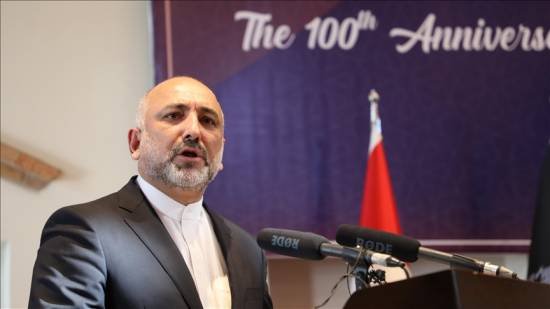Around the world, there were 13,654 earthquakes of magnitude 4 or higher in 2020, the strongest of which was recorded in the US.
Around 500,000 earthquakes, minor or major, occur on Earth every year, about 100,000 of which are felt, while around 100 cause damage.
According to the US Geological Survey (USGS), the most severe earthquake occurred in the US state of Alaska on July 22, 2020, with a magnitude of 7.8.
Experts at the USGS say the reason why more earthquakes are recorded today than in the past is because they receive more seismic station data with the development of technology.
In 1931, there were 350 seismic stations on Earth to record earthquakes, but today this figure is expressed in the thousands.
Earthquakes are divided into three categories: tectonic, volcanic and collapse earthquakes according to their formation, while tectonic tremors stand out as the most destructive type of earthquake in terms of severity and magnitude.
Movements in fractures called faults in the Earth's crust make up close to all earthquakes that occur around the world.
'Horseshoe'
The Pacific earthquake belt, also called the "Pacific Ring of Fire,” is known as the most intense earthquake belt, in which 90% of all earthquakes worldwide and 81% of major ones occur.
The 40-kilometer-long (around 25-mile) "Pacific Ring of Fire," shaped like a "horseshoe," spans the edges of the Pacific Ocean Basin and also contains about 75% of active volcanoes.
In 2020, seven of the nine major earthquakes with a magnitude of 7 or higher occurred in this area.
A 9.5 magnitude earthquake in 1960 in Chile’s Valdivia region is the most destructive earthquake ever recorded so far.
According to the USGS, the second largest earthquake zone where 5%-6% of all earthquakes worldwide and 17% of severe ones occur is the Alpine-Himalayan Belt.
One of the most destructive earthquakes ever occurred in 2004 in Sumatra, Indonesia with a magnitude of 9.1.
North and South America
The Global Earthquake Hazard Assessment Program (GSHAP) created a map of the world's regional earthquake zones by classifying them according to continents and earthquake magnitudes with data collected from 20 centers it created around the world.
One of the few major earthquake zones located in North America lies on the central coast of Alaska.
South America's most active earthquake zones lie along the continent's Pacific border.
Four of the 10 most powerful earthquakes ever recorded in the world occurred in South America.
Asia and Europe
Earthquake activity in Asia is most intensively observed in Japan.
Countries such as Indonesia, Fiji and the Tonga Islands (east of Australia) also record large numbers of earthquakes each year.
Central Asia is one of the world's major earthquake regions with high fault line mobility.
Northern Europe is located away from major earthquake zones, with the exception of Iceland's zone of active volcanic activity.
Africa
Africa has far fewer earthquake zones compared to other continents because it is an old land.
Earthquake activity is recorded in the Sahara, in the central part of the continent.
However, the eastern Mediterranean coast, especially Lebanon, where the Arabian plate borders the Eurasian and African plates, stands out as the most active region.
The area near the Horn of Africa (around the Gulf of Aden) also forms another active area on the continent.
Australia and New Zealand
Australia and New Zealand are known as seismically opposite countries.
The risk of earthquakes in general on the Australian continent is low or moderate, while its small island neighbor New Zealand is among one of the active earthquake zones in the world.
Antarctica
Compared to the other continents, Antarctica exhibits the least seismic activity.
This is because very few of the landmasses on the continent are located at or near the boundary with the continental plates.
The only exception is the zone where the Antarctic (South Pole) plate meets the Scotian plate./aa
Additional Info
- عنوان تمهيدي: 90% of all earthquakes and 81% of major ones occur in Pacific Ring Of Fire, which hosts 75% of world’s active volcanos


